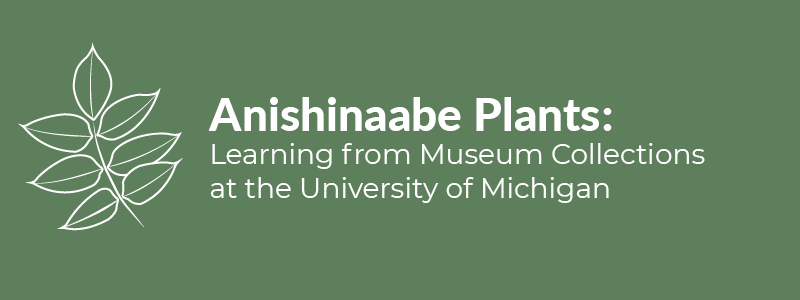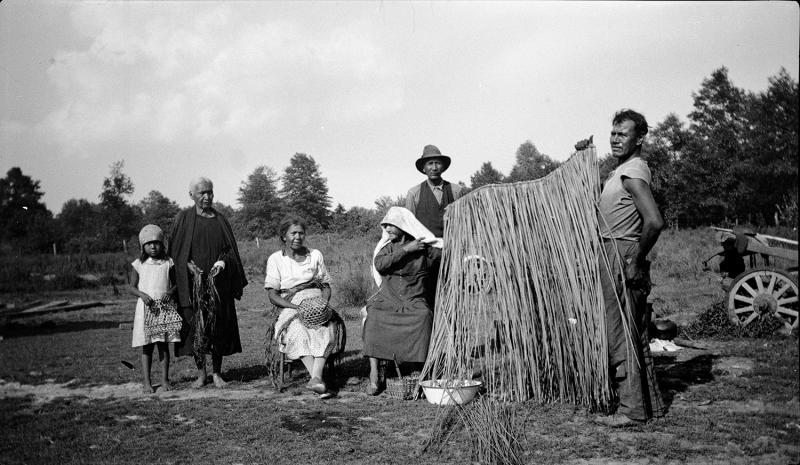Rush Mat
In July 1933, Volney Jones asked Mrs. Hyman (Ada) Smith to show him how to make a rush mat. According to Jones’ notes, the last time Mrs. Smith helped make a rush mat was when she helped her mother as a child. She asked her older sister, Mrs. George (Sarah) Shogonosh to assist her. Jones commented that at this time Mrs. Shogonosh was one of the few people on Walpole Island who remembered the details of how to weave a rush mat.
Preparing the Rush
The process of preparing the rushes for weaving took over a week. Mrs. Smith collected bulrush (Scirpus validus) from the marshes on the northeast side of Walpole Island. She grabbed the rush near its based and pulled with her hands to harvest it. She stressed the importance of selecting long, narrow rushes to make the mat durable.
The rushes were trimmed to the same length after they were collected. Scalding water was poured over them to fix their texture. The rushes were then laid in the sun to dry for at least a week. Jones collected samples of the prepared rushes for the museum collection.
Weaving the Mat
Once the rushes were prepared, Mrs. Shogonosh used basswood twine to weave the rush together. The sisters showed Jones how their mother created the top edge of the mat (commonly called the selvage). After the edge was finished, the mat was hung on a frame for weaving. The sisters demonstrated the process of weaving but did not complete the mat. Jones collected the partially finished mat for the museum and later published an article on it.
Anaakanashk - rush
Because the techniques for creating the selvage were passed dow within families, Wasson (Renee) Dillard, an Anishinaabe fiber artist and teacher, is able to identify distinct regional styles in rush mat that were collected by museums in the early 20th century. This selvage edge reflects both the way the weaver learned and their skill level. When Wasson teaches beginners to weave, she shows them with an “apprentice pattern," which looks like a braid. Once a student masters this pattern, she introduces them to the more complicated selvage pattern her mother taught her. Her mother learned this pattern from an elderly Kickapoo weaver in the 1970s.
Today Wasson teaches weaving at community workshops (see the video below). Although she teaches students to use natural fibers and about weaving traditions, she sees her journey of learning and teaching as a way to “use these old style weavings and find a place for them now.”
Bulrush Weaving Segment from PBS Common Ground, Season 9 Episode 11, May 2018


